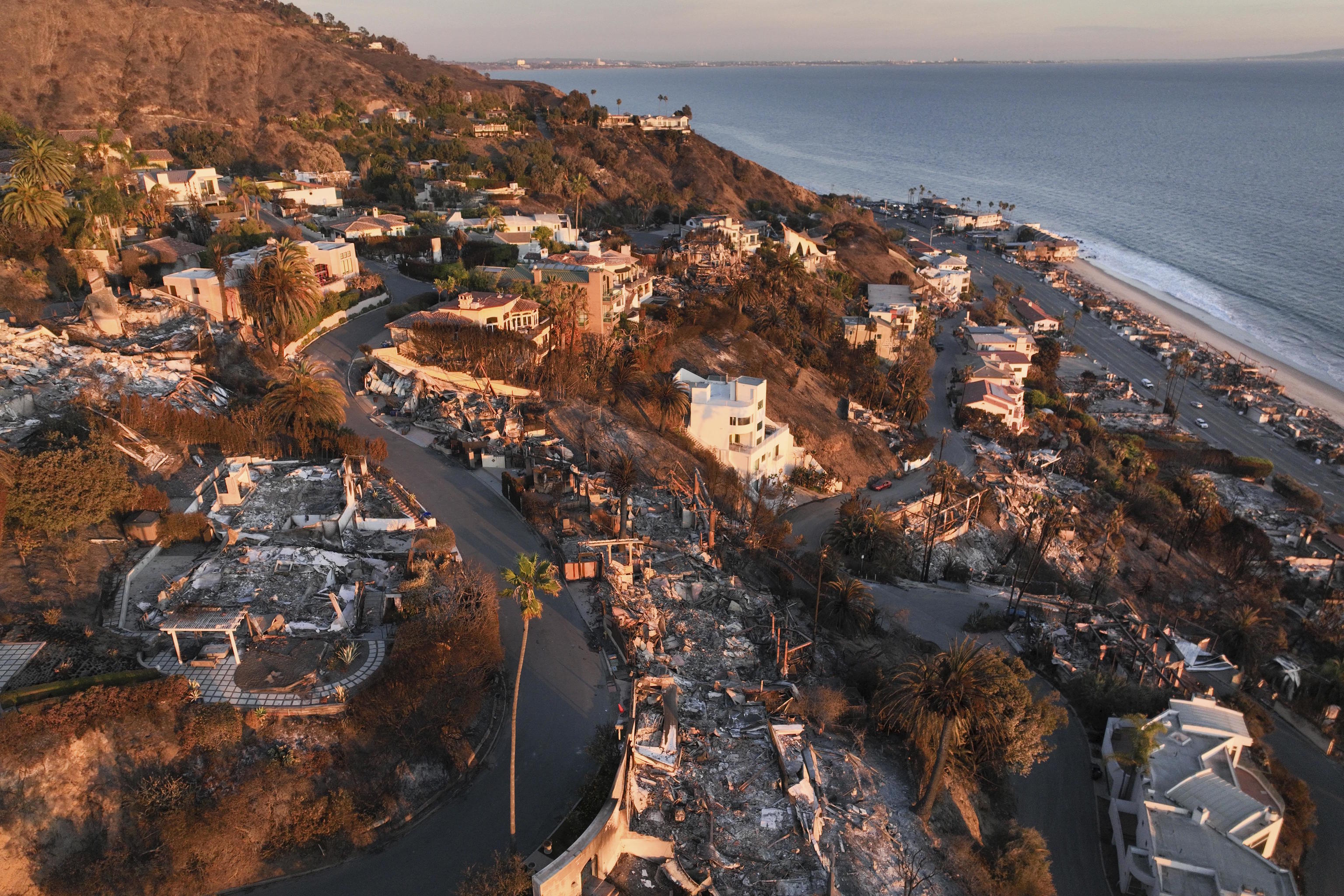As wildfires burn across the Los Angeles area, the operation to save homes and people — from those on the fire line to the logistics of feeding thousands of firefighters — is monumental.
The Eaton and Palisades fires that sparked last week in the Los Angeles area have killed at least 25 people and destroyed thousands of homes. They could be some of the costliest wildfires in U.S. history, and required the mobilization of immense firefighting power from across the North American continent.
From Portland to Houston, hundreds of out-of-state firefighters said goodbye to their families and loaded into engines bound for Los Angeles. Over 1,000 inmates in California filed onto hand crews in prison orange. Water bombers with "Quebec" stamped across their side swept over the blazes, as a Mexican fire brigade touched down and set to work. Nearly two dozen from the Navajo Scouts, a Bureau of Indian Affairs-managed program, joined the fight.
The engines of the operation are called incident command posts: small cities, rapidly erected in parking lots, fairgrounds or stadiums, that act as the headquarters for the some 5,000 responders on the Palisades fire alone.
At these command posts, the smoke-soaked clothes of hundreds of firefighters are washed everyday and meals are churned out by the tens of thousands. Those working behind the scenes do everything from quickly negotiating with landowners for spots to land helicopters to creating a new, roughly 50-page action plan everyday sent via QR code to everybody working the fire.
Then, the operation adapts as blistering winds make these wildfires fearsome and unpredictable.
On sloping hills north of Los Angeles this week, in the burn scar of the Eaton fire, crews were combing the landscape for any remaining flames and digging line when a plume of smoke set voices crackling over the radio.
As the winds picked up, a previously unburnt section of dense brush and trees torched, sending flames and embers — the potential start of another fire — into the sky. Homes sat maybe a mile away. Firefighters scrambled toward the blaze, then two helicopters screamed in overhead, their sirens blaring to warn off crews, before dumping water and retardant.
As the helicopters turned away, the crews quickly moved in, tearing at brush and cutting through trees with chainsaws to cut off the fires' fuel. One stood with his radio directing the helicopters on the height and location of the drops before they returned, the crews dispersing under the ear-piercing sirens.
It repeated until the fire was out, the firefighters' huffing, their yellow jackets smattered with gray from ash, dirt and splotches of chainsaw oil.
To the west, on the biggest fire in California — the Palisades fire — Desrosiers from British Columbia was working out of an incident command post, the biggest she's ever seen. The post runs for miles along the coast; it fills the beachside parking lots with fire engines, mobile kitchens, tents, equipment repair shops, gear depots, laundry services, medical staff, storage, and about anything else they would need.
"The biggest learning curve is seeing how all those people work together to keep those things together seamlessly," said Desrosiers, whose job as public information officer is to provide journalists and the public with updates on the fires.
Back in British Columbia, Desrosiers might have worked alongside one other public information officer. At the Palisades fire, it's somewhere near 50.
In slower moments at the command post, people swap stories.
"It's a lot of camaraderie and I think in the fire world, especially back home, it's like a big family, and that's how you feel in a fire camp, is that you're surrounded by people who really do have your back," Desrosiers said.
Rotating through the same incident command post as Desrosiers are firefighters from Oregon, including Sam Scott, who camped out in nearby Santa Monica. They pop in to grab batteries for their radios, eat meals, and pick up what Scott described as an 8-pound lunch bag replete with meals for a 24 hour shift.
For those long hours, Scott scours decimated neighborhoods, defending the homes that didn't burn and searching for anything left burning, small fires or smoldering beams. Scott stepped through flattened home after flattened home, where the only things left standing are charred chimneys and car husks.
"I have a kid and a family, and just thinking about all the memories I've made with my family in my home," said Scott, clearing his throat. "It can very easily make me cry. It's a very heavy feeling. It's someone's entire life."
By the end of those shifts, Scott and others are exhausted, retiring to clean and fix gear, before crawling into sleeping bags.
It was that exhaustion that Tapia, one of the the 30-person fire brigade from Mexico's National Forestry Commission, saw on the faces of U.S. firefighters when he first arrived at camp over the weekend.
They brightened at the Mexican brigade's arrival, said Tapia. "We came with the energy and attitude to help our brothers from the United States."
